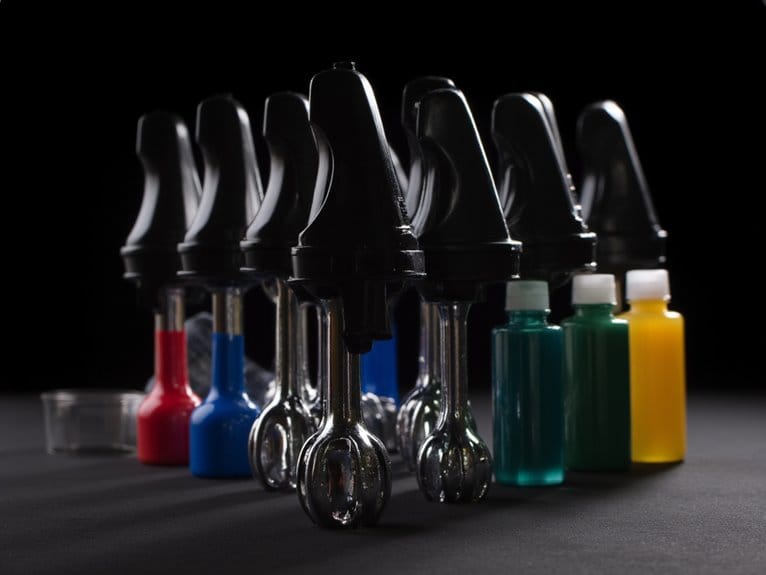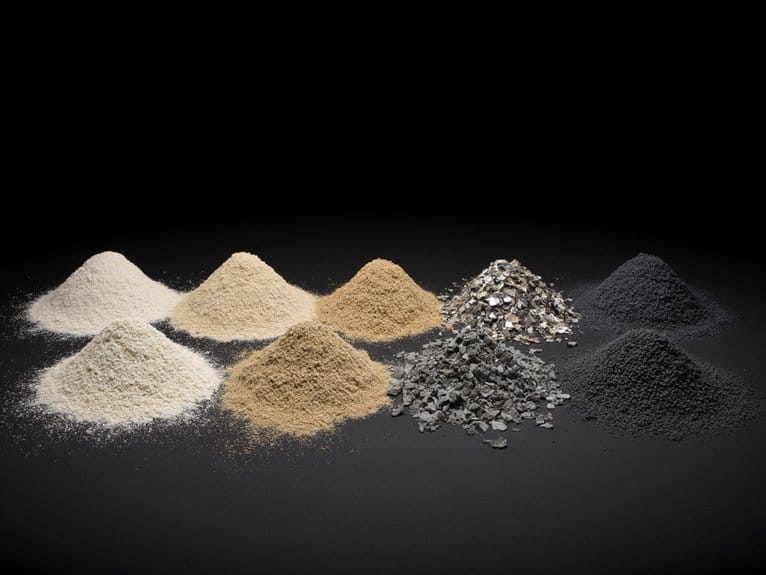We are supported by our audience. When you purchase through links on our site, we may earn an affiliate commission, at no extra cost for you. Learn more. Last update on 3rd July 2025 / Images from Amazon Product Advertising API.
Citadel Paints, with their proprietary binder formula, can adhere directly to certain surfaces, but they often require a primer to secure a strong, durable bond and peak paint performance. The role of primer is vital in creating a flawless surface for paint adhesion, filling in microscopic imperfections, and bringing out the true colors and textures of the paint. While Citadel Paints can be applied to bare metal, proper metal preparation is essential, and a primer specifically designed for metal surfaces can help reduce surface tension and create a strong bond. By understanding the importance of surface preparation and primer usage, you can release the full potential of Citadel Paints and achieve a professional-grade finish.
Understanding Citadel Paint Formulation
Through the lens of chemical composition, Citadel Paints are complex mixtures of various substances, each serving a specific purpose in the painting process. At the heart of Citadel Paints lies the pigment distribution, which refers to the uniform dispersal of color particles throughout the paint. This is achieved through a combination of grinding and milling processes, ensuring that the pigments are evenly distributed and consistent in color.
The binder composition is another critical component of Citadel Paints. The binder serves as an adhesive, holding the pigment particles together and adhering them to the painting surface. Citadel Paints employ a proprietary binder formula that provides excellent durability and flexibility, allowing the paint to withstand the rigors of handling and environmental exposure. The binder composition also plays an essential role in determining the paint’s flow characteristics, such as viscosity and surface tension, which affect the overall painting experience. By understanding the intricacies of Citadel Paint formulation, artists can better appreciate the science behind these high-quality paints and optimize their painting techniques accordingly.
The Role of Primer in Painting
As Citadel Paints meet the painting surface, a pivotal step often precedes their application: priming. The role of primer in painting is multifaceted, but its significance cannot be overstated. Primer serves as a key intermediary between the paint and the surface, facilitating a strong bond between the two. This bonding is essential for a durable and long-lasting finish.
The primer’s primary function is to create a flawless surface for paint adhesion. It fills in microscopic imperfections, creating a smooth and even substrate for the paint to adhere to. This guarantees that the paint bonds strongly to the surface, reducing the likelihood of flaking or peeling. A well-bonded paint job is more resistant to wear and tear, and primer plays a pivotal role in achieving this.
Furthermore, primer can also augment the paint’s overall performance. By providing a uniform base, primer helps to bring out the true colors and textures of the paint. This results in a more vibrant and detailed finish, which is especially important for miniature painting. To recap, primer importance lies in its ability to facilitate strong paint bonding, leading to a more durable and visually appealing finish. Additionally, painting without primer can lead to inconsistent results and a higher risk of paint chipping or peeling over time. Without a proper base, the paint may not adhere as effectively to the surface, leading to a less durable and long-lasting finish. In essence, primer serves as a crucial step in the painting process, ensuring that the final result is both visually stunning and built to last.
Citadel Paints on Bare Metal
When applying Citadel Paints to bare metal, a unique set of challenges arises. The metal surface lacks the necessary texture and preparation for ideal paint adhesion, leading to a subpar finish. To overcome this, metal prep becomes vital.
Proper metal prep involves surface roughening to create a textured surface for the paint to bond to. This can be achieved through various methods, including:
- Using a wire brush to scrub the metal surface
- Applying a metal etching solution to create microscopic ridges
- Employing a rough-grit sandpaper to score the metal
- Utilizing a metal primer specifically designed for surface preparation
Adhesion Issues With Citadel Paints
Because Citadel Paints are formulated to adhere to specific surface types, applying them to bare metal without proper preparation can lead to adhesion issues. This is especially true for metallic miniatures, where the paint may not bond properly to the surface, resulting in paint flakes and peeling. The primary culprit behind this issue is surface tension. When paint is applied to a surface with high surface tension, it can cause the paint to bead up and not adhere properly, leading to adhesion issues.
To mitigate this issue, it is crucial to prepare the surface before applying Citadel Paints. A primer specifically designed for metal surfaces can help to reduce surface tension and create a strong bond between the paint and the miniature. Additionally, lightly sanding the surface to create a rough texture can also improve adhesion. By taking these steps, modelers can guarantee a strong, durable bond between the paint and the miniature, reducing the likelihood of paint flakes and peeling. Top miniature paints in the market can also provide better adhesion and longevity. It’s important to select a high-quality paint that is formulated for metal surfaces, as this will ensure a smoother finish and better coverage. Overall, investing in proper surface preparation and using top miniature paints can significantly improve the overall quality and longevity of the paint job on metal miniatures.
Achieving a Smooth Finish
Citadel Paints’ unique formulation requires a carefully prepared surface to achieve a smooth, even finish. A well-prepared surface is essential for ensuring that the paint adheres properly and evenly, resulting in a high-quality finish.
To achieve a smooth finish, attention to surface prep is vital. This includes:
- Ensuring the surface is clean and free of dirt, oils, and other contaminants
- Removing any mold lines, flash, or other imperfections that may affect paint adhesion
- Smoothening out any rough surfaces or textures
- Applying a suitable primer to create a uniform base for painting
Best Practices for Preparing Surfaces
Three key aspects of surface preparation stand out as essential for achieving a smooth finish: cleaning, refining, and priming. A thorough surface cleaning is paramount to remove dirt, oil, and other contaminants that can interfere with paint adhesion. This is especially important when working with materials like resin or metal, which can be prone to oil residue.
When it comes to material selection, it’s pivotal to choose the right surface for the job. Citadel paints work best on smooth, non-porous surfaces, so materials like plastic or wood may require additional preparation. For example, wood surfaces should be sanded to create a smooth finish, while plastic may need to be lightly scrubbed with soap and water to remove any mold release agents.




